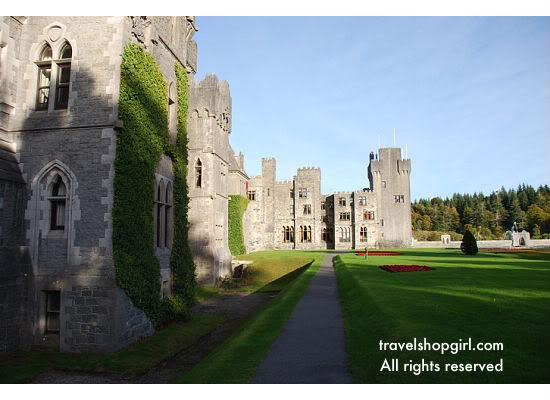Having recently returned from a trip abroad this Thanksgiving, I decided it might be time to finally wrap up our trip to Ireland.

In Dublin, you can see a statue of the great writer, Oscar Wilde. Wilde, best known for his works that include the play The Importance of Being Earnest and the novel The Picture of Dorian Gray. Inside the northwest corner gateway of Merrion Square in Dublin there is a statue of Oscar Wilde composed of different coloured stone, sitting on a large granite boulder.

A fun night for all was had in Dublin at The Brazen Head in Dublin where we experienced a night of Food, Folklore, and Fairies. If you think fairies are those pretty little things from Disney movies, guess again.

In fact, we learned about fairie hills and rings and came away thinking that you really shouldn’t mess with fairies. We were out and about in the countryside of Ireland when we spotted this fairie hill. A fairie ring or hill was and is considered sacred to believers in rural Ireland. They were constructed at the time of the earliest settlers and once abandoned, were considered to be inhabited by the fairies that control the good and bad of life. If disturbed, it was considered disrespectful to your ancestors and brought the wrath of the fairies upon you.

Poulnabrone (Poll na Brón): The tomb in context. Large stone tombs, known as megalithic tombs, were built throughout Western Europe during the Neolithic or New Stone Age, when the practice of farming was first becoming established. Over ninety megalithic tombs are known to survive in the Burren; the earliest of these are the court tombs and portal tombs built in the fourth millennium BC. The portal tomb here at Poulnabrone is one of two constructed in the Burren and is perhaps the best-preserved example in the country.

Famine walls: The much despised ‘famine walls’ were built throughout Ireland, but particularly in the hills and mountains of the west of Ireland, where walls were built solely to provide work to peasants in return for food. More often than not these stone walls provided no economic or infrastructural benefit, but were built anyway. A famine wall is a stone wall about the height of a man and were built during the Famine of the 1840s as a means to keep the hungry masses out of the estates of the landowners. It was usually the homeless Catholics who built the walls, for a few scraps to eat. Massive work projects like the Famine walls and the Famine roads kept the masses barely alive during the four years that the crops failed.

On a much lighter note, one of the highlights of our stay in Ireland was our trip to Ashford Castle. First let’s take a look at a little history:
The castle was built in 1228 by the Anglo-Norman de Burgo family following their defeat of the O’Connors, the Royal House of Connacht, who are still extant in the person of The O’Connor Donn. The de Burgo’s would build several such castles throughout the province, including one on the mouth of the River Corrib around which was to grow the City of Galway, but Ashford would remain their principal stronghold in the vastness of a wild and untamed province. The principal legacy of the native O’Connors is to be seen at the gates of the estate in the form of the magnificent Romanesque Augustinian Abbey of Cong. It is in this abbey that Ireland’s last High King Ruaidrí Ua Conchobair died and from which came the greatest relic of his Court, the Cross of Cong, created to hold a piece of the True Cross and now in the National Museum of Ireland.
After more than three and a half centuries under the de Burgos, whose surname became Burke or Bourke, Ashford passed into the hands of a new master, following a fierce battle between the forces of the de Burgo’s and those of the English official Sir Richard Bingham, Lord President of Connaught, when a truce was agreed. In 1589, the castle fell to Bingham, who added a fortified enclave within its precincts. In 1715, the estate of Ashford was established by the Browne Family (Baron Oranmore), and a lodge in the style of a 17th-century French chateau was added to the medieval splendour of the castle.
In 1951, the film director John Ford came to the west of Ireland to film what would become a movie classic The Quiet Man starring John Wayne and Maureen O’Hara. The grounds of Ashford Castle as well as nearby Cong formed the backdrop for much of the action in the film.

In its time the castle has played host to many notable guests, including: John Lennon, George Harrison, King George V of the United Kingdom, his consort Queen Mary, Oscar Wilde (whose father, Sir William Wilde, had an estate adjacent to Ashford, where the writer spent much of his childhood), LPGA Golfer Mindy Miller, U.S. President Ronald Reagan, H.R.H. The Prince Edward, Earl of Wessex, U.S. Senator Ted Kennedy, John Wayne, Brad Pitt, Pierce Brosnan, H.S.H. The Prince Rainier III of Monaco and his consort, H.S.H. The Princess Grace.
You will feel transported back in time upon arrival to Ashford Castle and everything you possible need will be at your fingertips. The history of this place is amazing and walking around you feel nothing less than lucky to have a moment in this magical place. This is the view from my in-laws’ room looking out over the garden.
You are able to walk everywhere around the grounds which covers literally thousands of acres. On the grounds they have a couple of restaurants and bars, an art gallery, a spa, and so much more. If you are thinking of treating yourself to one of those special once in a lifetime memories, you cannot pass up a stay at Ashford Castle.
Up next, my adventures over Thanksgiving break.



